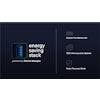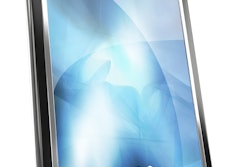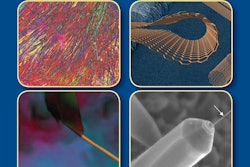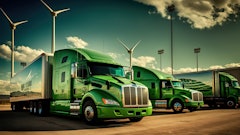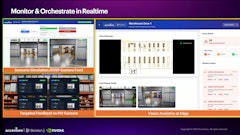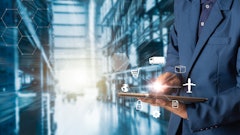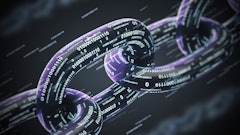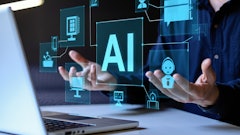
As a truckload of fruits and vegetables heads down an interstate, a nearby vehicle blows a tire causing sudden braking with debris damaging the reefer’s generator. Nearly 200 miles away, a warehouse supervisor receives data notification from inside the reefer that severe shock and vibration occurred and that the internal temperature is slowly dropping. Because of sensors throughout the reefer trailer and within the pallets of perishables, the 3PL was able to inspect and transfer the cargo to another reefer while preserving 80 percent of the load.
This is the power of sensors in the supply chain. They can provide full transparency of assets from raw material to last-mile delivery and beyond. According to The 2018 MHI Annual Industry Report, released by MHI and Deloitte Consulting LLP, 56 percent of survey respondents believe Sensors and Automatic Identification technologies have the potential to disrupt or create competitive advantage. While 90 percent of respondents believe Sensors and Automatic Identification are technologies expected to impact supply chains over the next 10-year period.
Those impacts can range from inventory management efficiencies to asset security to operational effectiveness to automated technology enhancements. What do companies want to achieve with sensors? That depends on whether the goal is to gather or capture data.
Log in to view the full article
As a truckload of fruits and vegetables heads down an interstate, a nearby vehicle blows a tire causing sudden braking with debris damaging the reefer’s generator. Nearly 200 miles away, a warehouse supervisor receives data notification from inside the reefer that severe shock and vibration occurred and that the internal temperature is slowly dropping. Because of sensors throughout the reefer trailer and within the pallets of perishables, the 3PL was able to inspect and transfer the cargo to another reefer while preserving 80 percent of the load.
This is the power of sensors in the supply chain. They can provide full transparency of assets from raw material to last-mile delivery and beyond. According to The 2018 MHI Annual Industry Report, released by MHI and Deloitte Consulting LLP, 56 percent of survey respondents believe Sensors and Automatic Identification technologies have the potential to disrupt or create competitive advantage. While 90 percent of respondents believe Sensors and Automatic Identification are technologies expected to impact supply chains over the next 10-year period.
Role of Sensors
Those impacts can range from inventory management efficiencies to asset security to operational effectiveness to automated technology enhancements. What do companies want to achieve with sensors? That depends on whether the goal is to gather or capture data.
Sameer Agrawal, general manager of IoT at Honeywell Safety and Productivity Solutions, says gathering data includes tracking such things as temperature, shocks, humidity and the like. People continue to push the envelope on data gathering because the sensing technology elements are much more affordable. “Consider a shipment of blueberries where it’s not only temperature that’s critical but shock and tilt, as well,” he says. “With Internet of Things (IoT) advanced technologies, combinational sensors are available that can provide a second or third order of magnitude.”
Data capture takes things steps further by processing sensing information in formats that allow for decision-making and risk mitigation. Paul Baboian, enterprise IoT/RFID solutions manager for Barcoding Inc., says companies are in the infancy stage of using sensors within the supply chain that are more local to the material loads—providing data-rich information at every supply chain segment in near- to real-time. What makes this possible, says Baboian, is the advancement and convergence of technologies, such as the cloud, blockchain and cellular data.
“Business applications consuming sensing data provide more accurate, more timely information about material move transactions,” explains Baboian. “The advantages begin with the efficiency of automatic data collection, but the ripple of downstream consumption of that data is far greater than the efficiencies upfront. We’re one of many that build customized dashboards to quickly gain information about shipments and where they are in the supply chain. Whether it’s pallets or parts, the dashboards can be integrated into a warehouse management system or inventory control application to leverage new, enhanced sensor data for greater supply chain visibility.”
RFID and NFC Sensors
There are several types of sensors that provide both data gathering and capture capabilities. One of the most common is radio-frequency identification (RFID). With a decrease in the cost of ownership and installation, use of RFID can be found in myriad environments, particularly within logistics. Another type of sensor is near field communication (NFC), a technology that has its own advantages in a warehouse or similar environment.
RFID. Mainstream utilization of RFID occurred several years ago when Walmart and the Department of Defense announced RFID projects and mandates. Baboian says RFID has become more plug-and-play since then, with greater sensitivity built into RFID tags and antennas. There are now specialty-use tags and antennas for many different use cases.
“Regardless of the company or supply chain, the business case must exist for RFID to be effective,” says Baboian. "Large Fortune companies are not the only benefactors. There are small business enterprises undertaking high-value logistics initiatives that leverage RFID technology. The ROI is there due to compliance requirements where chain of custody or track and trace visibility is enhanced.”
One industry where the business case is proving profitable is retail. Dean Frew, chief technology officer and senior vice president of RFID solutions for SML Group, a RFID solution provider for retailers, says RFID provides the ability for two things that existing barcodes do not. “First, it provides rapid non-line-of-sight data capture. And second, it provides the ability to monitor at the item-level. Both are transformational in supply chains and in stores,” says Frew.
He estimates that the market is only approximately 9 percent penetrated with significant room for growth. RFID adoption is growing at a rate of more than 30 percent a year in the retail apparel space, with the main focus being management of inventory in stores. Over the next 10 years, Frew anticipates the market to grow where there are more than 30 billion items per year using RFID tags in the apparel and footwear market to improve inventory accuracy.
“Currently, inventory accuracy for retailers is somewhere between 65 percent and 75 percent at the SKU level, illustrating a significant opportunity for improvement. RFID tags and readers are becoming more sensitive every year and we can expect this to continue,” says Frew. “As well, we’ll begin seeing RFID-enabled robots roaming the stores performing stock counts become more prevalent in 2019-2020.”
Just as in retail stores, factories and distribution centers are wrought with poor inventory accuracy at the SKU level, adds Frew. This causes simultaneous stockouts and bloated inventories; costing enterprises billions of dollars every year. “As more retailers adopt RFID in their stores, we’ll see more and more usage of RFID in factories and distribution centers to improve accuracy around processes like receiving, picking, packing and shipping,” he says. “We are already seeing this trend play out with some brand owners.”
NFC. Similar to RFID is NFC—with a few exceptions. The reader technology for NFC is now cellular phone-enabled. Thus, an application on a mobile phone can scan NFC tags rather than relying on specific (and expensive) reader hardware. Where NFC falls short of RFID is its scanning range and data-tag collection. NFC requires a reader at close range (20 centimeters) with the associated goods to obtain a data reading, while RFID readers can scan a truckload of tags instantly (within several meters).
Agrawal says NFC is regarded as another data capture mechanism. Whether it’s NFC, RFID, Bluetooth, Zigbee or Wi-Fi, all are different mechanisms capturing the sensing elements at the source and communicating them to an aggregator that transmits the data to the cloud or local processor to initiate decision-making.
“NFC is much more efficient than manually capturing the data, but the reader must be in close proximity to read the tags—a potential challenge from a supply chain standpoint,” says Agrawal. “Also, the use of any and all cellphones as an NFC reader is not ubiquitous. While Android devices are more open, iPhones offer limited access to NFC features. The kiss of death of any sensing application is the need for specialized pieces of equipment. The more ubiquitous the readers and technology are, the better the value that’s created and the decisions being made for the sensing performed.”
IoT Sensors
Both RFID and NFC sensors are well-integrated into many supply chain operations. With the advent of IoT, however, the possibilities for sensing technology have only just emerged.
With the push toward Bluetooth and other data capture technology, expectations are rising for what is achievable, says Agrawal.
- The use of consumer electronics and cellular technology for data capture should drive costs down on the sensing side.
- There exists automated capture of data which streamlines the process by eliminating steps such as locating data loggers in shipments and requiring a computer for data access.
- With the onset of the cloud, companies can achieve targeted dissemination of information where actions are performed ‘in time’ during a shipment journey rather than interpreted postmortem.
Honeywell and Intel partnered on an IoT-sensor initiative focusing on four critical issues impacting shipments—damage, spoilage, theft and contract non-compliance. The two companies created a combination sensor tag that signals light detection, vibration, shock, temperature, tilt, humidity and presence. The low-cost, disposable sensor tag can be used in multiple environments and different supply chains, while relying on standard consumer technologies, such as Bluetooth and Zigbee, for data collection and transfer to a centralized cloud environment.
“We wanted to create a path of least resistance where the cost is manageable. By using large-scale consumer electronics technologies combined with combination sensors, you can begin performing different levels of analytics,” says Agrawal. “Those analytics not only provide a picture of what just occurred and how to respond, but what is about to happen and how to avoid those events from transpiring.”
The ultimate goal of using sensing technology is to provide the right information to the right person at the right time. Otherwise, it will always be a postmortem evaluation of the data rather than using it in real-time to prevent problems. Agrawal says companies should continue forging ahead to say “Even before a problem occurs, how do we make it more predictive”? “The requirements are becoming mature where a threshold doesn’t need to be crossed,” he says. “The trends will start driving the action.”




